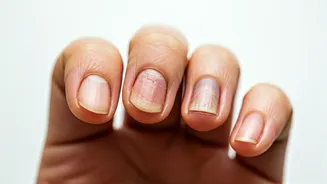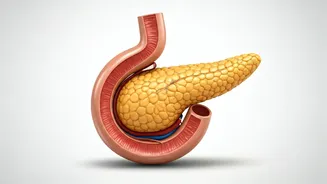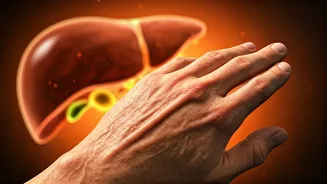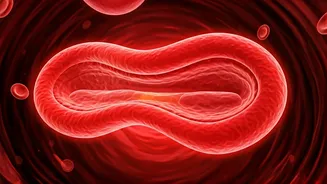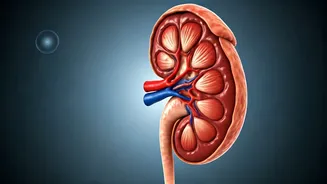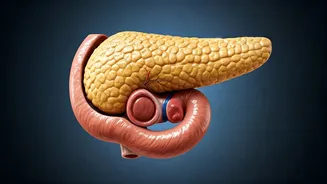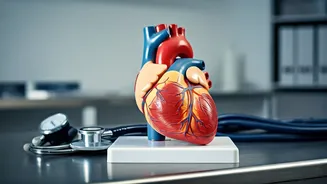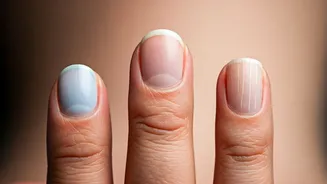Nail Health Indicators
Nails are not just for aesthetics; they provide clues about your health. Changes in their appearance, such as color alterations, texture variations, or structural
issues, can serve as early warning signs of underlying medical conditions. Observing your nails regularly can aid in early detection of potential health problems. The shape, thickness, and condition of your nails should be monitored, as they can indicate underlying health concerns. Understanding what constitutes normal nail appearance is key to noticing any anomalies. For instance, the presence of certain spots, lines, or changes in nail growth could necessitate a medical consultation. Healthy nails generally appear smooth, without ridges, grooves, or discoloration. Any deviation from this can be indicative of a health issue that needs professional attention.
White Spots on Nails
Small white spots, medically known as leukonychia, can appear on your nails. Usually, these spots are harmless and commonly result from minor injuries to the nail bed. These small injuries typically heal without further intervention. However, if the white spots are extensive or persistent, they could potentially indicate a more serious underlying issue. In rare cases, extensive white discoloration may suggest fungal infections or even systemic diseases. If you observe large or widespread white spots, it is always best to consult a healthcare professional. They can perform diagnostic tests to identify and address any underlying conditions. Regular observation and early medical attention can prevent the escalation of such issues.
Nail Discoloration Signals
Nail discoloration can take on different forms, often providing clues about your health. Yellowing of the nails could signify a fungal infection, especially if accompanied by thickening and crumbling. Furthermore, yellow nails can sometimes indicate more serious conditions, like thyroid problems or, in some cases, lung disease. Blue-tinged nails may signify a lack of oxygen in the blood, potentially indicating respiratory or cardiovascular issues. Dark streaks or lines underneath the nail, particularly if they appear suddenly, need immediate medical attention. Such lines might be a sign of melanoma, a severe form of skin cancer. Any unusual color change warrants a medical checkup to ascertain the cause and receive appropriate treatment.
Changes in Nail Texture
Nail texture offers valuable insights into your overall health. Ridges on your nails can be a normal part of aging, but pronounced ridges or changes in these ridges might indicate health problems. Vertical ridges often appear with age but can also be caused by nutritional deficiencies or other underlying health conditions. Horizontal ridges, known as Beau's lines, are deeper and can be a sign of a serious illness or injury that disrupted nail growth. Brittle or splitting nails can result from frequent exposure to water, harsh chemicals, or nail polish removers, and can also be linked to thyroid disease or iron deficiency. Thin, spoon-shaped nails, where the nail curves inward, may indicate iron deficiency anemia. Any alteration in the nail's texture should be noted and discussed with a healthcare provider.
Nail Shape Abnormalities
The shape of your nails can change, offering significant clues about your health. Clubbing, where the fingertips enlarge and the nails curve downward, is often linked with lung and heart conditions, or gastrointestinal issues. Spoon-shaped nails, or koilonychia, where the nail dips inward, are commonly associated with iron deficiency anemia. Pitting, or small depressions in the nail surface, can be associated with psoriasis or eczema. Flaky or peeling nails could indicate vitamin deficiencies or external damage from everyday activities, but can also be a sign of fungal infections. These shape changes are essential indicators that should not be ignored, as they can highlight the presence of internal health problems. Consulting a doctor to understand and address these changes is essential.
When to See a Doctor
If you observe any concerning changes in your nails, such as discoloration, significant changes in shape or texture, or pain, schedule an appointment with your healthcare provider. Early detection is key to managing potential health issues effectively. Do not hesitate to seek medical advice if you notice sudden and significant changes in your nails. A doctor can provide an accurate diagnosis and appropriate treatment. Be prepared to share details about your nail changes, including when you first noticed them, any associated symptoms, and your medical history. This information helps your doctor make an accurate assessment and create a treatment plan. Always err on the side of caution; a professional diagnosis ensures your health concerns are addressed properly.
